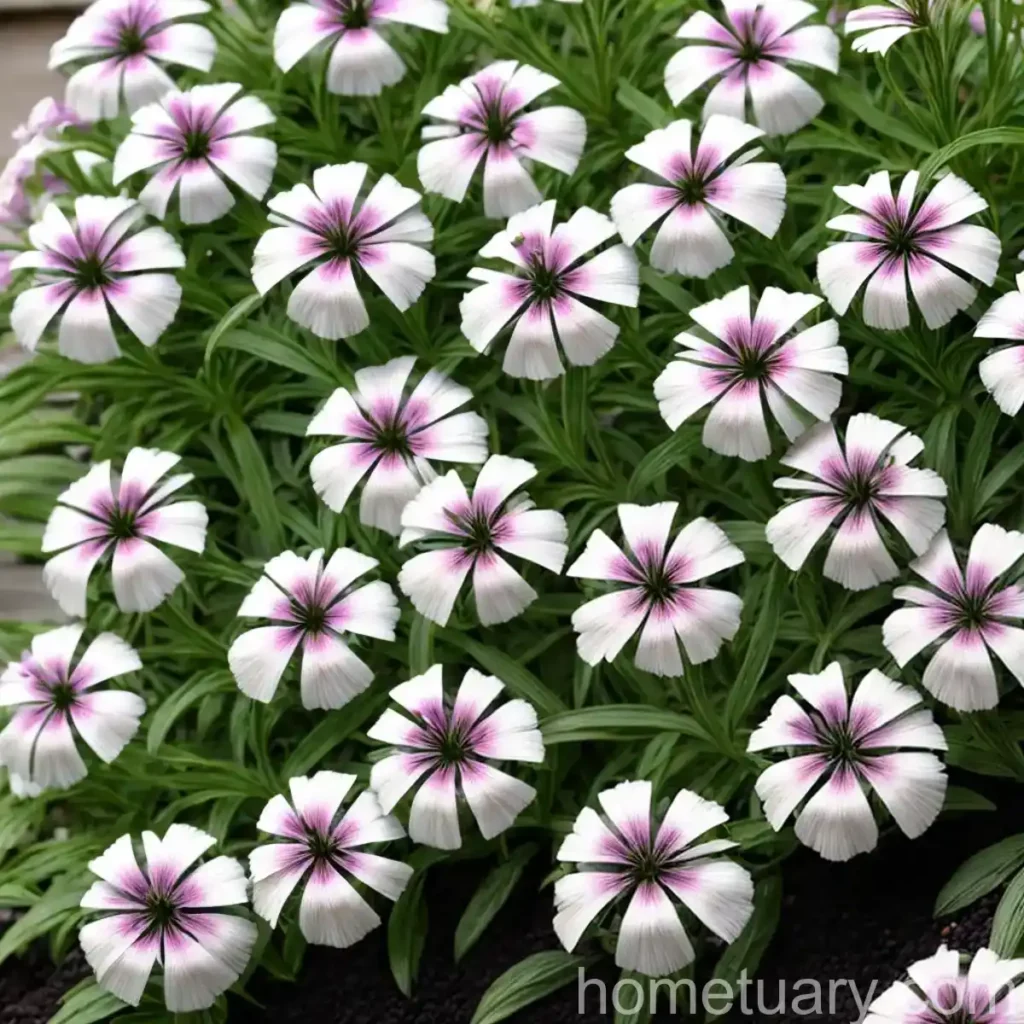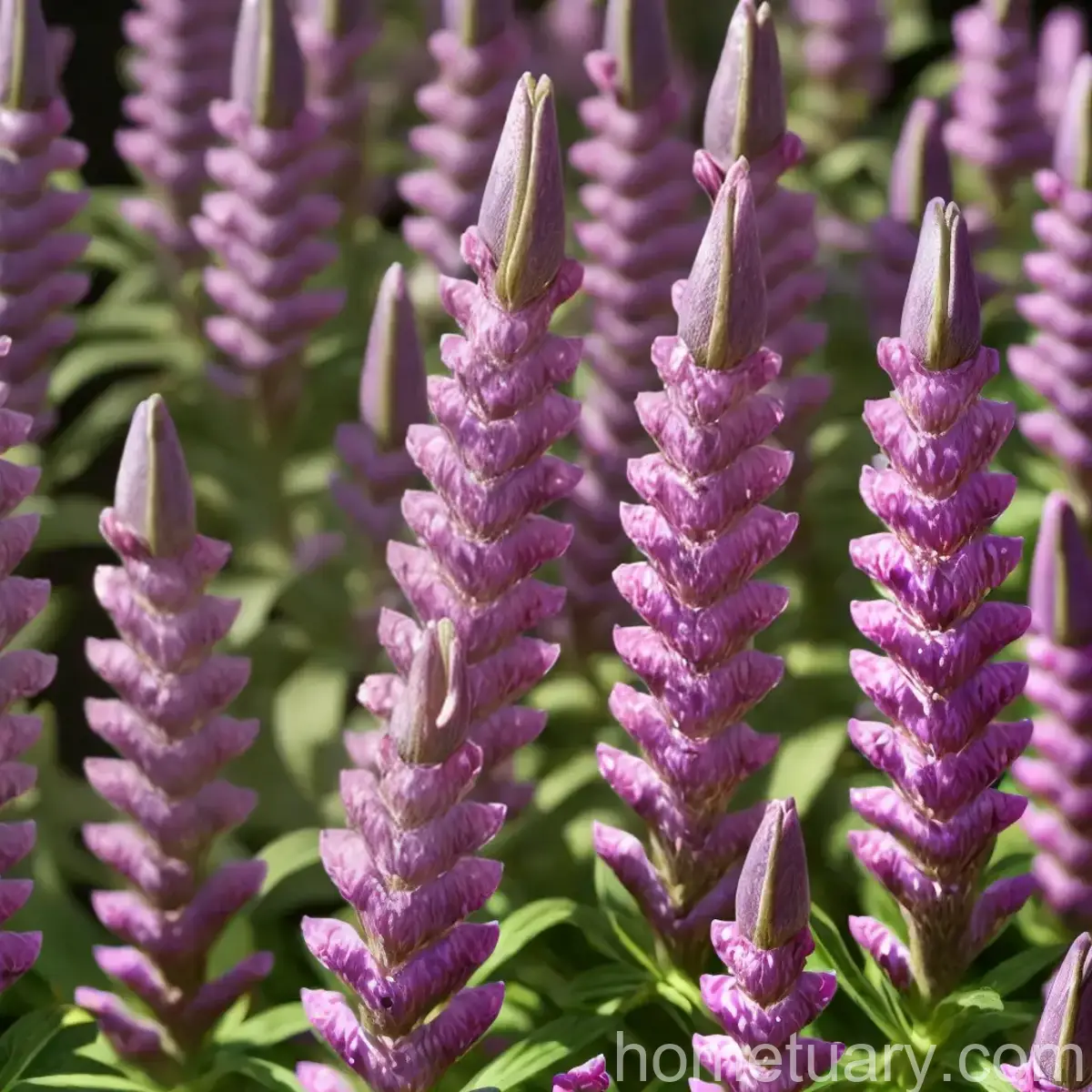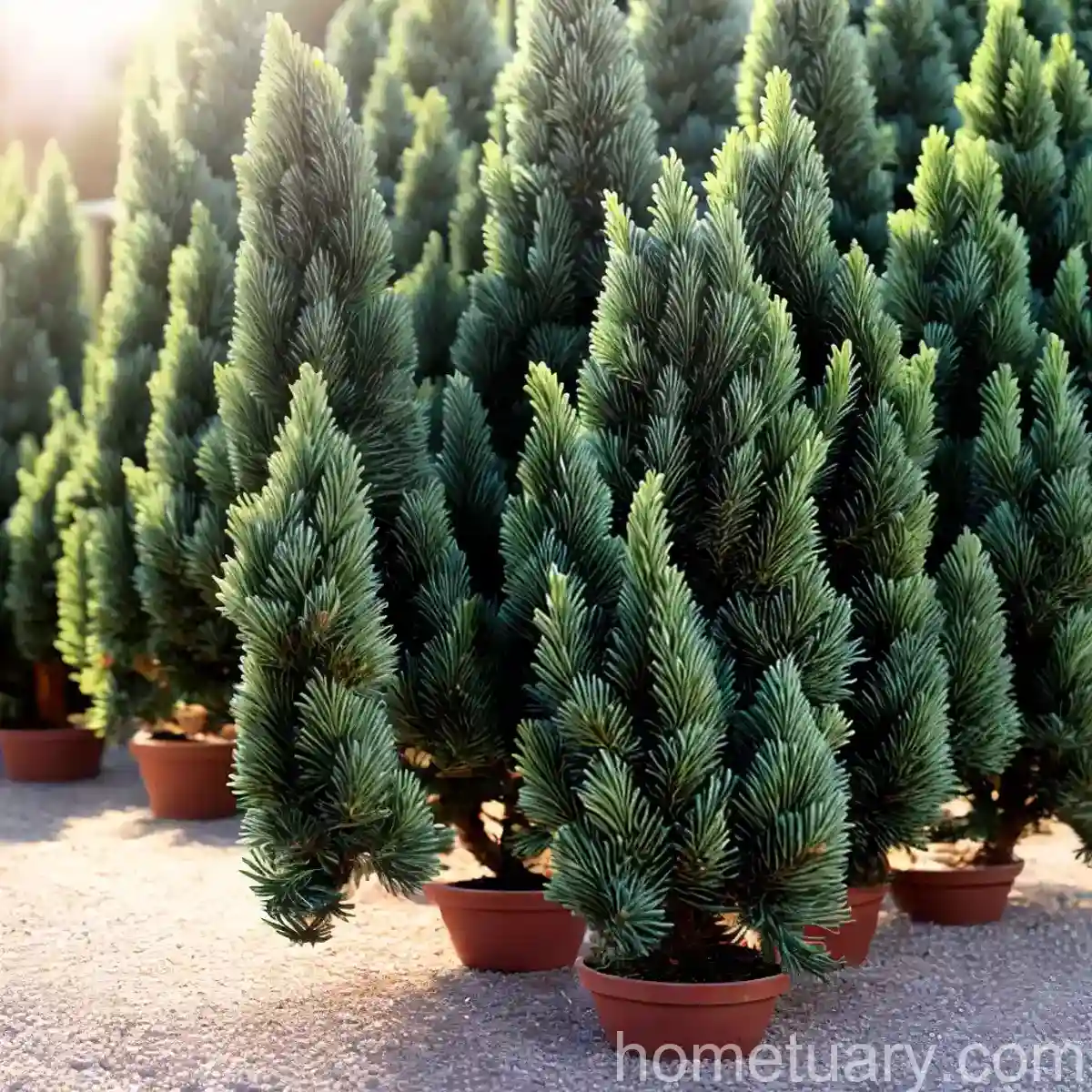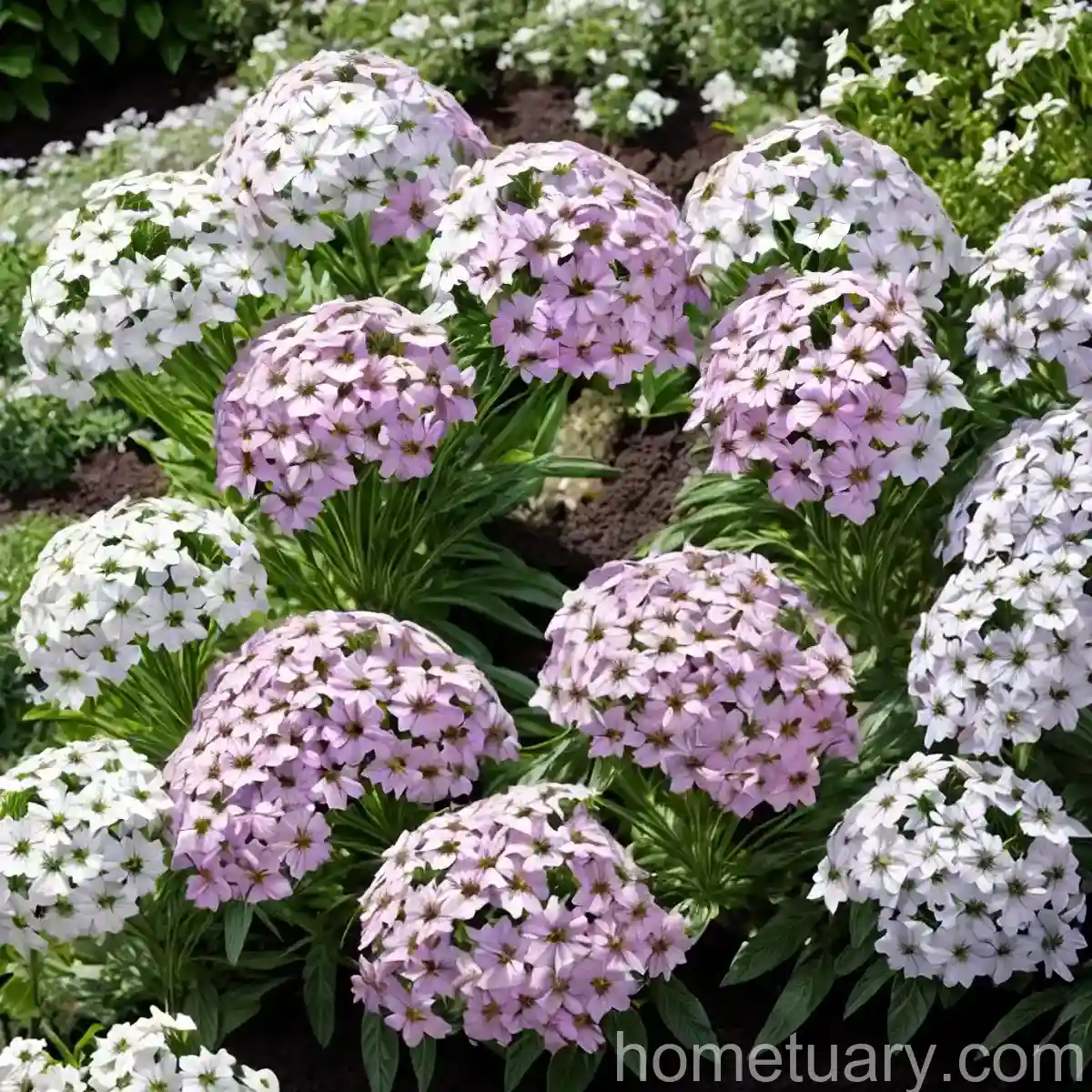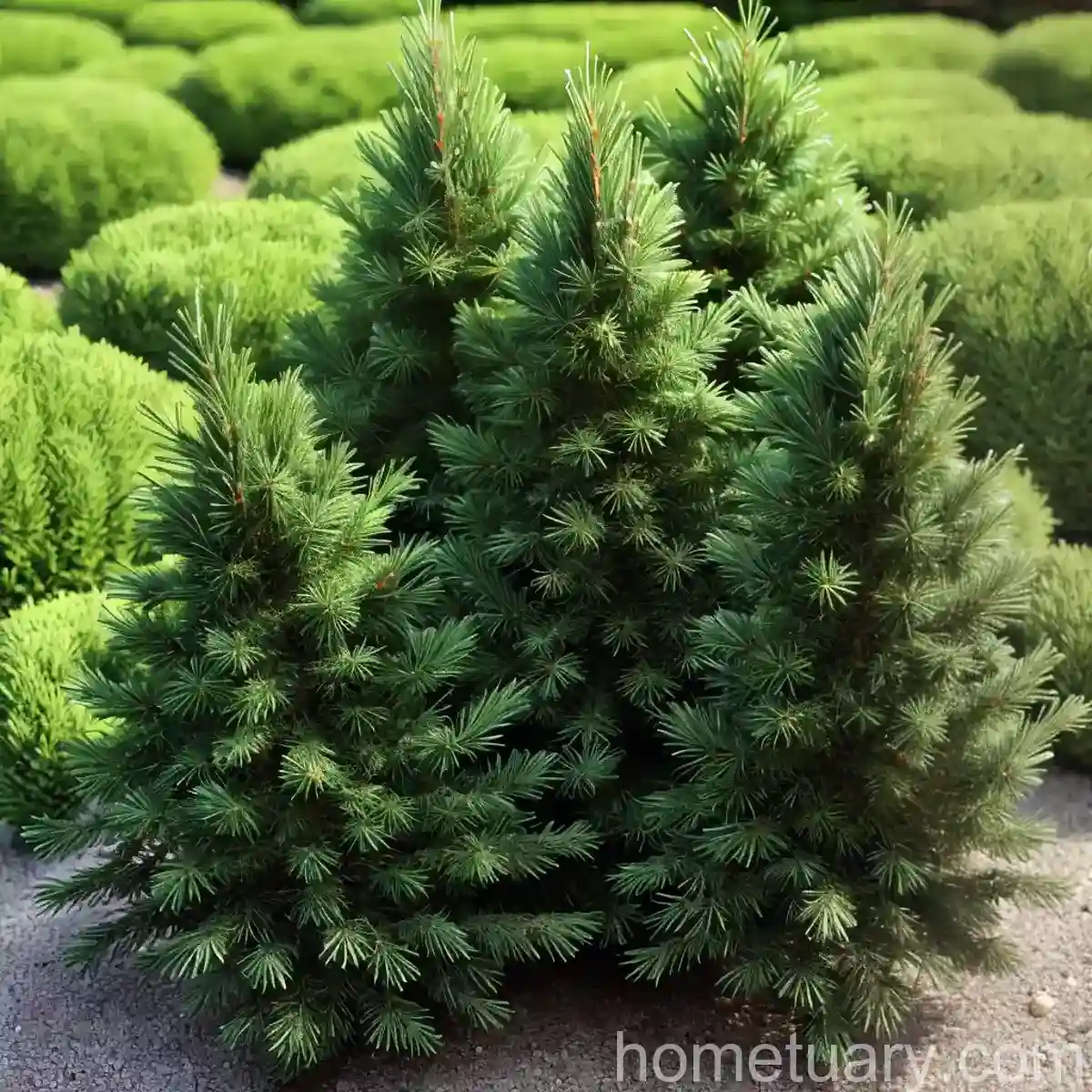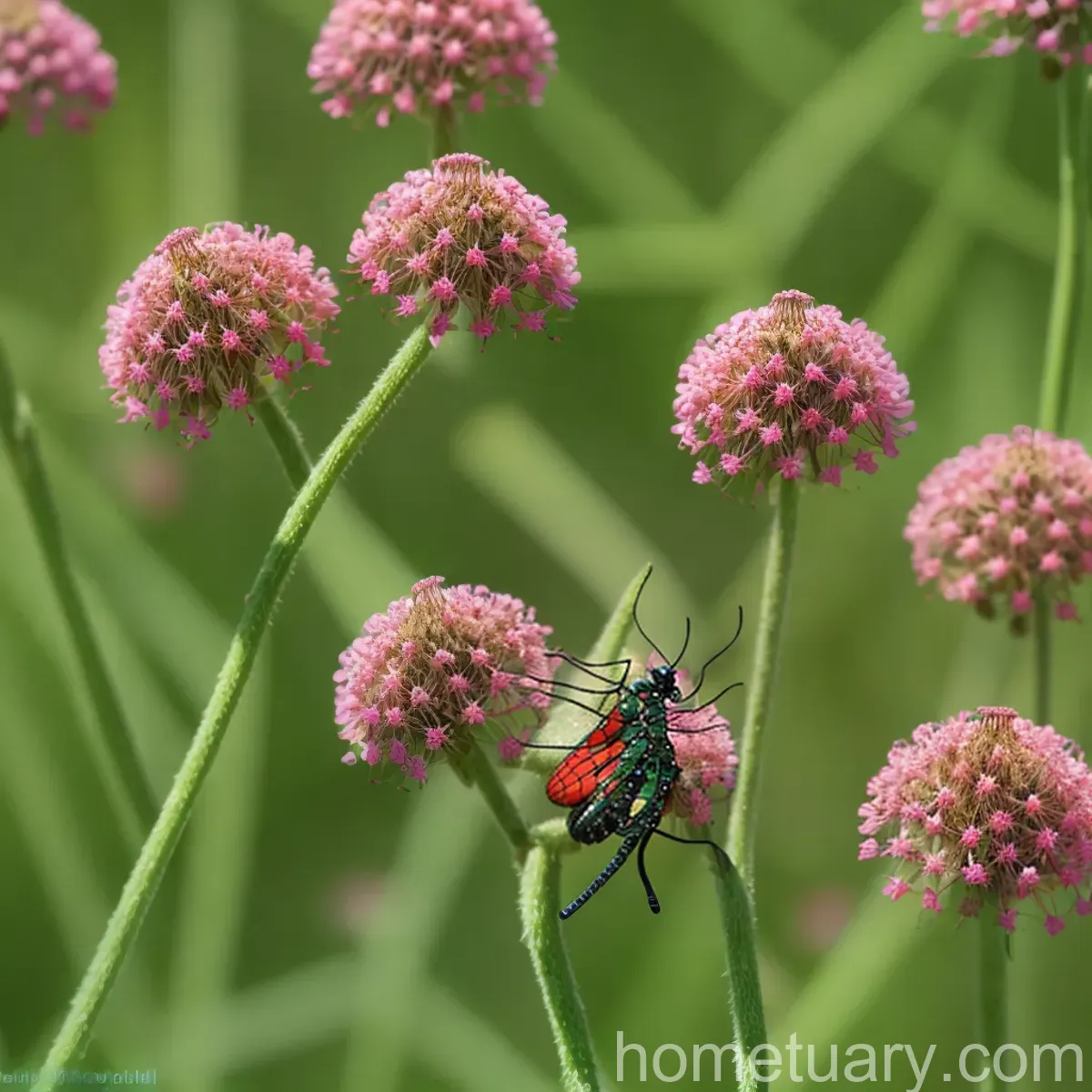Garden Phlox (Phlox paniculata ‘Laura’) Care Guide
Garden phlox, scientifically known as Phlox paniculata ‘Laura’, is a stunning perennial plant that is adored for its clusters of colorful, fragrant flowers and hardy nature. This comprehensive care guide will provide valuable insights into cultivating and maintaining this captivating plant.
What is Plant Phlox paniculata ‘Laura’?
Phlox paniculata ‘Laura’ is a herbaceous perennial plant that belongs to the Polemoniaceae family. It is a cultivar of the Phlox paniculata species, commonly referred to as garden phlox or summer phlox. This species is native to the eastern regions of North America and is renowned for its attractive blossoms and lush foliage.
The ‘Laura’ variety is distinguished by its vibrant clusters of fragrant, star-shaped flowers that bloom in shades of lavender, pink, and white. The plant typically grows to a height of 2 to 4 feet and spreads to about 2 to 3 feet wide, producing a dense, bushy appearance. It is characterized by its long-lasting, profuse blooms and its ability to attract pollinators, making it a delightful addition to gardens and landscapes.
Key Takeaways – Garden Phlox (Phlox paniculata ‘Laura’)
Culture
- Common Name: Garden Phlox ‘Laura’
- Botanical Name: Phlox paniculata ‘Laura’
- Plant Type: Herbaceous Perennial
- Mature Height: 2-4 feet
- Mature Spread: 2-3 feet
- Bloom Time: Midsummer to Early Fall
- Fragrance: Fragrant
- Attracts: Butterflies, Hummingbirds
Uses
- Garden Borders
- Cut Flower Gardens
- Pollinator Gardens
- Container Gardens
- Cottage Gardens
- Naturalized Areas
Water
- Regular, Even Moisture
- Avoid Overwatering
- Mulching to Retain Moisture
Sunlight
- Full Sun to Partial Shade
- Ensure Adequate Sun for Optimal Blooms
Fertilizer
- Balanced Fertilizer
- Fertilize in Early Spring
- Avoid Excessive Nitrogen
Soil
- Well-Drained, Rich Soil
- pH: Slightly Acidic (6.0-7.0)
- Amend Heavy or Sandy Soils
Pruning
- Deadheading Spent Blooms
- Cut Back Midsummer for Reblooming
- Thinning Sparse Growth
Propagation
- Division in Spring or Fall
- Root Cuttings
Container Popularity
- Well-Suited for Containers
- Provide Adequate Space
- Ensure Drainage Holes
Common Diseases
- Powdery Mildew
- Botrytis Blight
- Root Rot
Disease Diagnosis
- Inspect Leaves for Powdery Residue
- Monitor for Brown Spots
- Evaluate Soil Moisture for Root Rot
Common Pests
- Spider Mites
- Aphids
- Thrips
Botanist’s Tips
- Regular Watering to Maintain Moisture
- Avoid Overcrowding for Air Circulation
- Deadhead to Encourage Reblooming
Fun Facts
- Attracts Beneficial Insects
- Long-Lasting Cut Flowers
- Drought-Tolerant Once Established
Now that we’ve covered an overview of Phlox paniculata ‘Laura’, let’s delve deeper into each aspect of caring for this beautiful plant.
Watering Needs for Phlox paniculata ‘Laura’
Proper watering is essential for the health and vitality of garden phlox. While ‘Laura’ is relatively adaptable to different moisture conditions, it thrives best when provided with regular, even moisture during its growing season. However, it is crucial to avoid overwatering, as excessive moisture can lead to root rot and other fungal diseases.
Sunlight Requirements for Garden Phlox ‘Laura’
Phlox paniculata ‘Laura’ exhibits versatile sun requirements and can thrive in both full sun and partial shade. However, to ensure optimal blooming and overall plant vigor, it is advisable to provide the plant with adequate sunlight. In regions with hot climates, providing some afternoon shade can help prevent the plant from wilting and experiencing heat stress.
Soil Preferences for Phlox paniculata ‘Laura’
The ideal soil for garden phlox ‘Laura’ is well-drained, fertile, and slightly acidic, with a pH range of 6.0 to 7.0. Amending heavy or sandy soils with organic matter can aid in improving drainage and enhancing the soil structure, promoting healthy root development and overall plant growth.
Fertilizing Garden Phlox ‘Laura’
Fertilizing garden phlox ‘Laura’ is crucial for sustaining its blooming potential and overall vigor. A balanced, slow-release fertilizer should be applied in early spring, following the emergence of new growth. However, it is important to avoid excessive nitrogen, as this can promote excessive foliage growth at the expense of blooming.
Pruning Phlox paniculata ‘Laura’
Pruning plays a vital role in maintaining the health and appearance of Phlox paniculata ‘Laura’. Regular deadheading of spent blooms not only promotes a neat and tidy appearance but also encourages the plant to produce new blooms. Additionally, thinning out sparse growth and cutting back the plant in midsummer can stimulate re-blooming and prevent self-seeding.
Propagation Methods for Phlox paniculata ‘Laura’
Phlox paniculata ‘Laura’ can be propagated through division in either spring or fall. Carefully dividing the plant’s root ball and transplanting the divisions to new locations can help rejuvenate the plant and expand its presence in the garden. Root cuttings can also be utilized as an effective propagation method for ‘Laura’ phlox.
Container Gardening with Phlox paniculata ‘Laura’
The ‘Laura’ variety of garden phlox is well-suited for container gardening, making it a versatile choice for patio gardens and smaller outdoor spaces. When growing ‘Laura’ in containers, it is essential to provide adequate space for the plant to spread its roots and thrive. Additionally, ensuring proper drainage in the containers is crucial for preventing waterlogged soil, which can negatively impact the plant’s health.
Popularity of Garden Phlox ‘Laura’
Garden phlox ‘Laura’ has gained popularity among gardeners and landscape enthusiasts due to its prolific blooms, delightful fragrance, and adaptability to various growing conditions. Its attractiveness to pollinators, including butterflies and hummingbirds, further enhances its appeal, making it a favored choice for pollinator gardens and floral landscapes.
With its diverse uses and ornamental qualities, ‘Laura’ phlox has secured its place as a beloved perennial in horticultural settings.
Common Diseases of Phlox paniculata ‘Laura’
Phlox paniculata ‘Laura’ is susceptible to certain diseases that can impact its overall health and appearance. Understanding these common diseases and their diagnosis is essential for effectively managing and preventing them.
-
Powdery Mildew: This fungal disease presents as a powdery, white residue on the leaves, affecting the plant’s aesthetics and potentially weakening its vigor. Adequate air circulation and preventative fungicidal treatments can help manage powdery mildew.
-
Botrytis Blight: Also known as gray mold, botrytis blight manifests as brown spots on the leaves and stems, often accompanied by a gray, fuzzy mold. Pruning affected areas and promoting proper air circulation can aid in controlling this disease.
-
Root Rot: Excessive moisture or poorly drained soil can lead to root rot in ‘Laura’ phlox. Monitoring soil moisture levels and addressing drainage issues are critical for preventing this detrimental condition.
Common Pests Affecting Phlox paniculata ‘Laura’
Several pests pose potential threats to Phlox paniculata ‘Laura’, and early detection and management are vital for preserving the plant’s health and beauty.
-
Spider Mites: These tiny arachnids can cause stippling and discoloration on the leaves, impacting the plant’s vitality. Regular monitoring and targeted insecticidal treatments can help control spider mite infestations.
-
Aphids: Aphids are notorious for causing leaf distortion and sap depletion in plants. Natural predators, such as ladybugs, and insecticidal soaps can aid in managing aphid populations.
-
Thrips: Thrips can cause silvering of the foliage and inhibit the plant’s overall growth. Integrated pest management practices and targeted insecticide application can assist in controlling thrips infestations.
Botanist’s Tips for Successful Growth
Garden phlox ‘Laura’ thrives when provided with optimal growing conditions and thoughtful care practices. Here are some valuable tips from botanists and experts to ensure the successful cultivation of Phlox paniculata ‘Laura’:
- Regular Watering: Maintain consistent soil moisture without overwatering to support healthy growth and blooming.
- Adequate Air Circulation: Prevent overcrowding and ensure proper spacing for improved air circulation, reducing the risk of fungal diseases.
- Deadheading: Regularly remove spent blooms to encourage continuous blooming and maintain the plant’s visual appeal.
- Mulching: Apply a layer of organic mulch around the base of the plant to retain soil moisture and suppress weed growth.
These tips, based on botanical expertise, can greatly contribute to the flourishing of ‘Laura’ phlox in garden settings.
Fun Facts about Phlox paniculata ‘Laura’
Garden phlox ‘Laura’ is not only admired for its visual appeal and versatility but also for its fascinating characteristics and benefits. Here are some intriguing fun facts about Phlox paniculata ‘Laura’:
- Beneficial Insects: ‘Laura’ phlox attracts beneficial insects, contributing to a healthier, balanced garden ecosystem.
- Long-Lasting Cut Flowers: The flowers of ‘Laura’ phlox are excellent for cut flower arrangements, offering long-lasting beauty indoors.
- Drought Tolerance: Once established, ‘Laura’ phlox exhibits notable drought tolerance, making it an adaptable and resilient plant in varying environmental conditions.
These fun facts add depth to the appreciation of garden phlox ‘Laura’ and underscore its significance in horticulture and garden design.
Links to External Resources
For further insights, guidance, and resources related to the care and cultivation of Phlox paniculata ‘Laura’, consider exploring the following external sources:
-
Phlox paniculata ‘Laura’ – Missouri Botanical Garden: Detailed information on the characteristics and care requirements of Phlox paniculata ‘Laura’ from the Missouri Botanical Garden.
-
Growing Phlox paniculata – University of Vermont Extension: A comprehensive guide to growing and maintaining Phlox paniculata, offering valuable insights applicable to ‘Laura’ phlox care.
-
Managing Pests in Gardens: Phlox – Penn State Extension: Resource on identifying and managing pests that may affect garden phlox, including applicable strategies for ‘Laura’ phlox.
By exploring these reputable external resources, gardeners and plant enthusiasts can access a wealth of knowledge and support for the successful cultivation of Phlox paniculata ‘Laura’ and similar varieties.
In summary, the enchanting allure and admirable qualities of Phlox paniculata ‘Laura’ make it a cherished addition to gardens, landscapes, and floral arrangements. With the guidance provided in this comprehensive care guide, enthusiasts can cultivate and nurture this captivating perennial plant with confidence and expertise, enriching their outdoor spaces with its vibrant blooms and delightful fragrance.
Remember to celebrate the longevity of ‘Laura’ phlox blooms, experiment with companion planting, and explore the diverse uses of this versatile plant, embracing its contribution to wildlife-friendly habitats and the beauty of garden landscapes.
References:
– Missouri Botanical Garden. (n.d.). Phlox paniculata ‘Laura’. https://www.missouribotanicalgarden.org/PlantFinder/PlantFinderDetails.aspx?taxonid=287835&isprofile=0&isgetplant=1&
– University of Vermont Extension. (n.d.). Growing Phlox paniculata. https://www.uvm.edu/sites/default/files/media/g-phlox.pdf
– Penn State Extension. (n.d.). Managing Pests in Gardens: Phlox. https://extension.psu.edu/managing-pests-in-gardens-phlox

